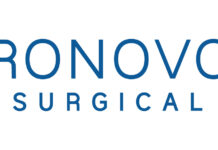Rump’s 2019 proposal to integrate three additional Department of Health and Human Services agencies into the NIH could thin the budget for medical research.
- There is an urgent need to accelerate breakthroughs in medical research, targeting chronic diseases like Alzheimer’s and cancer.
- Dr. Laurie Glimcher is an advisory board member for Healthy Returns, CNBC’s new health-care innovation conference, on March 28, 2018, in New York City.
- Dr. Laurie Glimcher, president and CEO of Dana-Farber
Published 13 Hours Ago Updated 6 Hours AgoCNBC.com
In 2016, astrophysicists detected gravitational waves — ripples in the space-time continuum produced by the collision of two massive black holes 1.3 billion years ago in a galaxy 1.8 billion light-years distant from our own. Now another collision of cosmic importance is taking place, on our own Earth, and the ripples it is producing threaten not only America’s long-held lead in biomedical research but also the health of every man, woman and child in the country.
An urgent need and an ominous trend are poised to collide, and the results for public health in the United States could be catastrophic.
The need is to accelerate transformational breakthroughs in medical research targeting chronic diseases like Alzheimer’s and cancer. But the trend opposing it is a growing climate of suspicion, and even hostility, toward science.
Copies of the President Trump’s FY 2019 budget proposal are delivered to the U.S. House Budget Committee offices on Capitol Hill in Washington, U.S. February 12, 2018.
On Feb. 12, President Donald Trump released the 2019 Health and Human Services budget proposal. And while Trump’s initial proposal to slash the National Institutes of Health’s budget by 27 percent has been rejected, the latest proposal still doesn’t offer much hope: With an additional $538 million slated for the NIH over 2017, its $34.8 billion budget is roughly equal to the 2017 level, yet Congress is calling for the creation of three new institutes to be integrated into the NIH. This threatens to thin funds even more.
Finding cures for diseases like cancer requires bold, fundamental breakthroughs rooted in basic science. Yet public budget cuts are making that kind of investment increasingly scarce, and the current model of government funding imposes a timidity that encourages researchers to accept the sure thing rather than assume the inherent risk of seeking the big break, resulting in their pursuing the incremental rather than the transformational. Being risk-averse may be a good idea if you are saving for your retirement; it’s a bad idea in basic research.
A protestor holds a placard as scientists and science enthusiasts participate in the ‘March for Science’ which celebrates the scientific method, in Westminster, central London on April 22, 2017, Earth Day.
We need to change this dynamic, but we are constantly hampered by a political environment increasingly suspicious of the entire scientific enterprise. More worrisome is that attitudes toward research, ranging from climate change to childhood vaccines, often align with one’s political views. Elected officials who have an obligation to lead instead now often dismiss or disparage scientists with whose conclusions they disagree. What was once the most fact-based of all endeavors has become politicized.
It’s all about game-changing research, not behavior
In recent generations, medical science has made enormous advances in extending and improving life by changing people’s behavior. Discouraging smoking and encouraging healthy eating are cases in point. While those advances should be celebrated, it is also time to recognize that the significant progress achieved is not enough.
The next generation of progress will not come from changes in behavior but rather from an aggressive pursuit of game-changing research. But that simply will not happen on its own. It will take both a concerted investment and a new mentality from both the public and private sectors.
Investment is the apt term, for this research pays dividends, and not simply for the companies that develop new therapies. The cost of Alzheimer’s disease alone is expected to rise to more than $1.1 trillion in 2050, and there is no effective treatment — none — for these patients. A therapy that could merely delay the onset by five years would save $220 billion over that time, seven times the entire annual budget of the National Institutes of Health.
“The current model of government funding imposes a timidity that encourages researchers to accept the sure thing rather than assume the inherent risk of seeking the big break, resulting in their pursuing the incremental rather than the transformational.”
HIV/AIDS was transformed in relatively rapid order from a death sentence to a chronic but manageable disease. The reason is not behavioral changes — though those remain vital — but rather revolutionary research that ultimately created antiretroviral drugs that did not exist a generation ago.
4 ways to accelerate a medical breakthrough
Achieving fundamental breakthroughs in medical research is less likely to happen in this environment. But I believe it can change, and I offer a few ideas to do so.
- Companies should allocate at least a small percentage of their tax-cut windfall to investment in scientific exploration. Companies that benefit from biomedical research have an obligation to invest in it. Many biomedical research and related companies recently received a considerable tax cut, and now they should allocate at least a small percentage of that windfall to investment in scientific exploration.
- Companies must invest with bold ambitions. These companies must invest in basic research with bold ambitions, accept a high failure rate, and be guided by not just the next quarter but by the needs of people facing chronic diseases over the next generation.
- Politicians must rally support for government-funded research that targets breakthroughs. The “cancer moonshot” produced an additional $1.8 billion new dollars for cancer research and care and was funded this year. An encouraging sign? Possibly. But it needs to be reauthorized every year.
- Political leaders must embrace the promise of science. Our political leaders bear an obligation to cease their antiscience rhetoric and recognize data and evidence as a basis for policy.The economic benefits will be enormous, but backing this revolution in scientific innovation also fulfills our and their obligation to develop new therapies or cures for the extraordinary emotional, physical and financial toll chronic diseases are poised to take on society — on all of our families.















